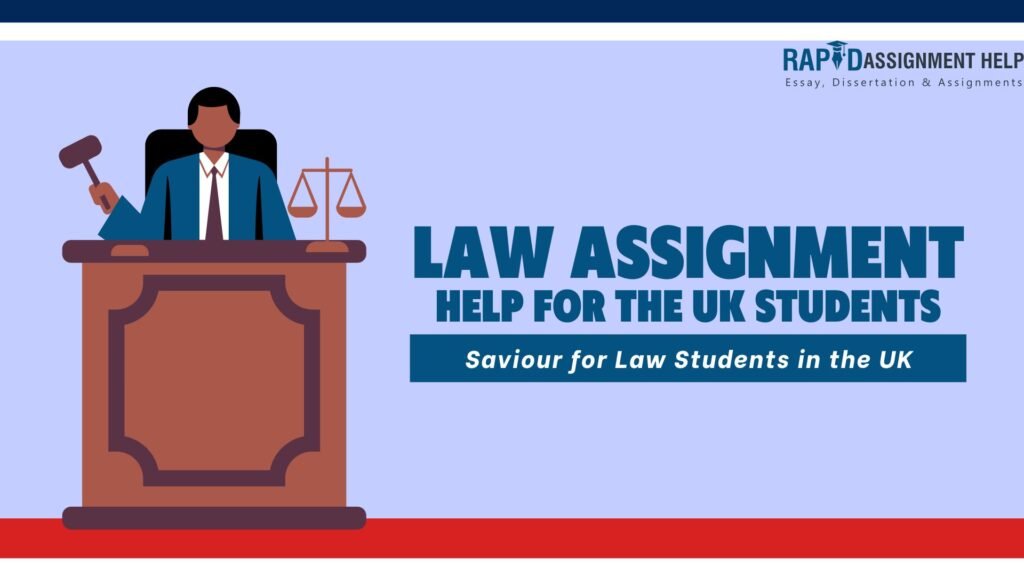Problem questions are a core part of any UK law degree. They test not just your legal knowledge but also your ability to apply it to real-life scenarios. Yet, many students lose marks because they don’t know how to approach them correctly — even when they understand the law.
In this article, we’ll break down the process of answering a law problem question effectively, using the IRAC method, avoiding common mistakes, and showing how academic tools like Law Assignment Help can guide you toward stronger results.
What Is a Problem Question in Law?
A problem question presents a fictional scenario where legal issues arise. You’re expected to analyze the situation, identify the legal problems, apply relevant law, and draw logical conclusions.
These assignments are common in:
-
Contract Law
-
Criminal Law
-
Tort Law
-
Public Law
-
Land and Equity Law
And in all cases, application of the law matters more than simply knowing it.
What Examiners Expect in Problem Questions
Law lecturers and examiners in the UK look for:
-
Accurate identification of legal issues
-
Clear application of relevant cases and statutes
-
A logical, structured argument (usually using IRAC or a variation)
-
A concise conclusion for each issue
-
Proper use of legal terminology and OSCOLA referencing
Simply listing cases won’t earn high marks — they want analysis, not regurgitation.
Step-by-Step Guide to Answering Law Problem Questions
✅ Step 1: Read the Question Carefully — Twice
Before jumping in, read the problem twice:
-
First for overall understanding
-
Second for identifying legal issues
Tip: Highlight facts that suggest specific areas of law (e.g., a broken contract, signs of negligence, signs of criminal intent, etc.).
✅ Step 2: Identify the Legal Issues
Ask: What legal areas are involved?
For example:
-
In a contract dispute: Is there offer, acceptance, consideration, breach?
-
In a criminal law problem: Is there mens rea and actus reus?
List out each issue before starting your answer. This helps structure your response.
✅ Step 3: Use the IRAC Method
IRAC = Issue, Rule, Application, Conclusion
This is the gold standard in legal problem solving. Here’s how it works:
🔹 I — Issue
State the legal question.
E.g.: Is there a valid contract between A and B?
🔹 R — Rule
State the relevant law, including cases and statutes.
E.g.: A contract requires offer, acceptance, intention, and consideration (Carlill v Carbolic Smoke Ball Co).
🔹 A — Application
Apply the law to the facts. This is where you gain marks.
E.g.: A made an offer by post, B accepted via email. The postal rule doesn’t apply — see Entores Ltd v Miles Far East Corp.
Use multiple cases to support or contrast arguments.
🔹 C — Conclusion
Give a short, firm conclusion.
E.g.: Therefore, a valid contract likely exists.
Repeat the IRAC process for each legal issue separately.
✅ Step 4: Structure Your Answer Logically
Follow a clean layout:
-
Introduction – Briefly outline your approach (optional, depending on word count).
-
Main body – Use IRAC for each issue.
-
Conclusion – Optional summary or final point if needed.
Use subheadings or paragraph spacing if allowed. Clarity is key.
Example: Short IRAC Answer for Tort Law
Scenario: A customer slips on a wet floor in a shop with no warning signs.
Issue: Has the shop breached its duty of care under negligence?
Rule: Under Donoghue v Stevenson and Caparo v Dickman, businesses owe a duty of care to lawful visitors.
Application: The wet floor posed a foreseeable risk. No warning signs were present. In Haley v London Electricity Board, failure to warn was held negligent.
Conclusion: The shop is likely in breach and may be liable.
This clear breakdown helps markers follow your thinking — and award marks accordingly.
Common Mistakes to Avoid in Law Problem Questions
-
❌ Listing cases without applying them
-
❌ Missing key issues because you rushed reading
-
❌ Blending multiple issues into one paragraph
-
❌ Failing to address both sides of an argument
-
❌ Poor grammar, unclear structure, or weak referencing
Even a strong legal understanding won’t shine through a messy answer.
How Law Assignment Help Can Improve Problem Question Skills
Many UK law students use Law Assignment Help to strengthen their problem question skills — not just to get work done.
Here’s how it helps:
-
🧠 Model answers to see ideal IRAC structures in action
-
🛠️ Feedback services that critique your application and logic
-
📚 Guidance on case law relevance for specific modules
-
✅ Proofreading for structure, OSCOLA, and grammar
-
📘 Topic-specific help (e.g., Land Law or Tort)
Ethical use of assignment help focuses on learning, not outsourcing. Services that teach you how to answer, rather than write for you, can make a big difference.
FAQs
❓ Can I use IRAC in all subjects?
Yes, though you may adapt it slightly. For complex scenarios, some students use ILAC (Legal Rule before Application) or FIRE (Facts, Issues, Rule, Evaluation).
❓ How long should each issue be?
There’s no set word count, but each issue should be fully explored — 2–5 paragraphs depending on complexity.
❓ Should I include a conclusion at the end?
Some tutors expect a final wrap-up, others don’t. Follow your module guidance — when in doubt, include a brief summary.
Final Thoughts: Problem-Solving Is a Legal Skill
Law isn’t just about remembering precedents — it’s about applying them effectively. Answering law problem questions well is a skill you build over time, through planning, structure, and practice.
If you’re struggling to develop that structure, services like From Confused to Confident: Navigating CIPD Studies with Clarity can provide frameworks, feedback, and guidance to sharpen your writing and thinking — ethically and effectively.












































